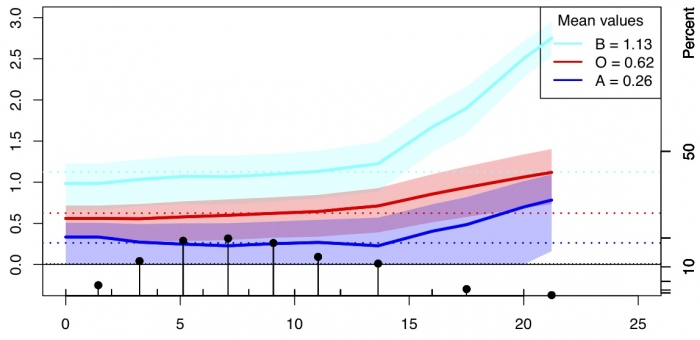Type: Presentation
Venue: 17th Conference on Integrated Observing and Assimilation Systems for the Atmosphere, Oceans, and Land Surface (IOAS-AOLS)
Citation:
Ross N. Hoffman, R. Atlas, J. Ardizzone, D. K. Smith, S. M. Leidner, and J. C. Jusem (2013) Estimating the Uncertainty of Satellite Microwave Ocean Surface Wind Observations and the Resulting Cross-Calibrated, Multi-Platform (CCMP) Ocean Surface Wind Analyses. 17th Conference on Integrated Observing and Assimilation Systems for the Atmosphere, Oceans, and Land Surface (IOAS-AOLS), Austin, TX.
Resource Link: https://ams.confex.com/ams/93Annual/webprogram/Paper220604.html
The Desroziers et al. (2005) diagnostics (DD hereafter) are applied to the cross-calibrated, multi-platform (CCMP) ocean surface wind data sets which are produced using a variational analysis method (VAM) as described by Atlas et al. (2011). The DD confirm that the ECMWF operational surface wind speed error standard deviations vary with latitude in the range of 0.7 - 1.5 m/s and that the cross-calibrated RSS wind speed retrievals standard deviations are in the range of 0.5 - 0.8 m/s. Further the estimated CCMP analysis wind speed standard deviations are in the range of 0.2 - 0.4 m/s. Errors for wind speeds < 16 m/s are homogeneous. For the relatively rare, but critical, higher wind speed situations, errors are much larger. This application of the DD helps to address two issues with the VAM by calculating uncertainty estimates for the VAM inputs and outputs, i.e., the background (B), the observations (O) and the analysis (A). First, the variational analysis method (VAM) does not directly provide estimates of analysis uncertainty. Second, the VAM requires the specification of observation and background error statistics. In applications based on smoothing splines like the VAM used for the CCMP project, weights utilized in the cost function must be specified in place of background error statistics. The DD directly provide estimates of the required error statistics in terms of the expected value of products of the increments O - B, O - A, and A - B. The expectation operator in the DD formalism must be replaced with a sample average. In principle any sensible sample could be used. When the diagnostics are inconsistent, this provides opportunities to discover, and then mitigate, errors in the formulation of the data assimilation system. The results of the DD analysis will be modeled so as to provide uncertainty estimates for each grid point for each analysis. The figure shows the estimated standard deviation of wind speed background, observation, and analysis errors (m/s) as a function of observed wind speed (m/s).

